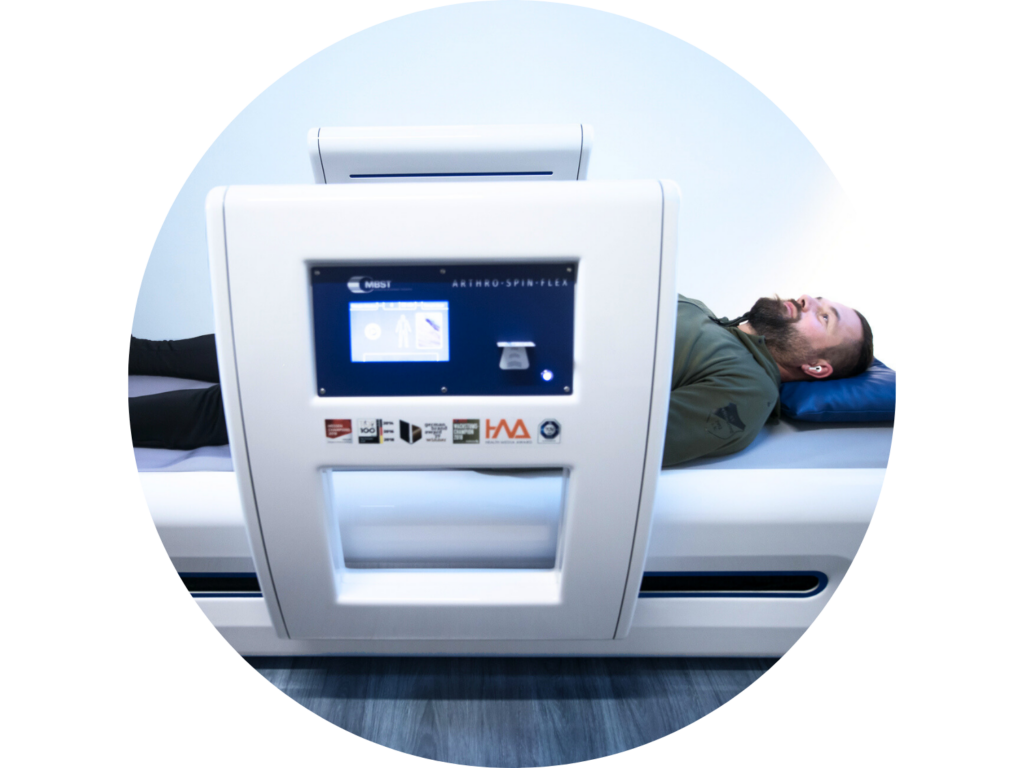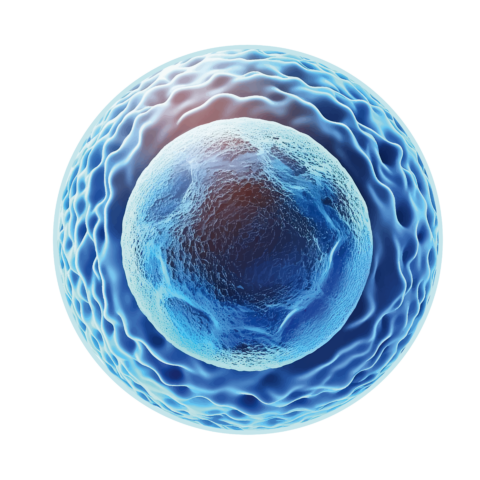MBST® is a non-invasive therapy that works directly at the cellular level. MBST® applies the principle of magnetic resonance therapeutically to encourage natural biophysical processes in the tissue.
Originally developed from MRI technology, MBST® is used worldwide by doctors and healthcare professionals for patients with degenerative conditions and injuries of the musculoskeletal system.
The goal: support regeneration, reduce pain and inflammation, improve mobility, restore quality of life.
By directly targeting damaged tissue, MBST® is designed to activate regenerative processes and restore function and resilience.
Studies show that MBST® therapy, which uses magnetic resonance, stimulates biophysical processes and may provide anti-inflammatory and pain-relieving effects.*
Non-invasive and pain-free: no known side effects, no injections or surgery
Advanced treatment: targets not just the symptoms but the cause of your condition
Confirmed efficacy: 80-85% of MBST® treated patients report positive effects such as pain relief and better mobility*
Highest quality standards: the certified medical devices meet all safety and efficacy requirements for medical use
Scientifically and clinically proven: over 2 million treatment hours and more than 30 studies
Body tissues have different features and characteristics. During the development of MBST®, the different parameters of cartilage, bone, muscles, tendons, ligaments, discs, nerves, and skin were carefully studied. These parameters determine the most effective way to stimulate each type of tissue using magnetic resonance.
These findings were used to develop treatment sequences adapted to the specific needs of each type of tissue. These sequences are programmed onto the MBST® therapy card and transferred to the therapy device, allowing for optimal stimulation for each tissue.


MBST® is the only non-invasive medical device that uses magnetic resonance therapeutically at a cellular level. It offers several benefits in the treatment of musculoskeletal issues.
Scientific studies, conducted in partnership with various universities, confirm MBST®’s positive impact on pain-signalling pathways and inflammatory responses.*
After successful MBST® therapy, patients report reduced pain, improved mobility, and find it easier to manage everyday activities.*
Here’s why patients and healthcare providers choose MBST®:

MBST® is a certified medical device that meets the highest standards for safety and efficacy. MBST® does not require injections, surgery or drugs.

Over 30 studies in research and clinical applications show the positive effects of MBST® in treating various musculoskeletal conditions.

MBST® is compatible with other forms of treatment, with no known issues reported. It can be used alongside other therapies with the aim of supporting the body’s regenerative ability.


MBST® offers a stress-free and comfortable treatment experience. With over 25 years of use and more than 2 million treatment hours, no side effects have been reported.

Studies have shown that MBST® provides positive effects including pain relief, reduced inflammation, and improved mobility, with results often lasting several years.*

MBST® directly targets the damaged tissue with the aim of triggering regenerative processes and restoring function and resilience. It targets not only the symptoms but also the cause of your condition.
* Steinecker-Frohnwieser et al. 2014, J. Orthop. Rheum., 9/2014 | Steinecker-Frohnwieser et al. 2018, Clin Exp Rheumatology 36, 294–301 | Thöni et al. 2021, Chronobiology International, DOI: 10.1080/07420528.2021.1910288 | Steinecker-Frohnwieser et al. 2021, Int J Molecular Sciences 22, 5959 | Mann et al. 2022, frontiers in cellular neuroscience 16, 859545 | Klinische Bewertung (CE-TPL-01) gemäß Medical Device Regulation (EU) 2017/745 und MEDDEV 2.7/1 Rev. 4 für die MBST®-Produktfamilie, medXteam GmbH, 22.03.2022, Rev. 2.0 | Kullich et al. 2013, SCHMERZnachrichten 4a | van Laack et al. 2011, Orthop Praxis 47, 11/2011, 536–543 | Kullich et al. 2016, Ber. naturwiss.-med. V. Salzburg, 18, 7–17 | Krpan 2017, Clin. Cases in Mineral and Bone Metabolism, 14(2), 235–238
You are currently viewing a placeholder content from Google Maps. To access the actual content, click the button below. Please note that doing so will share data with third-party providers.
More Information